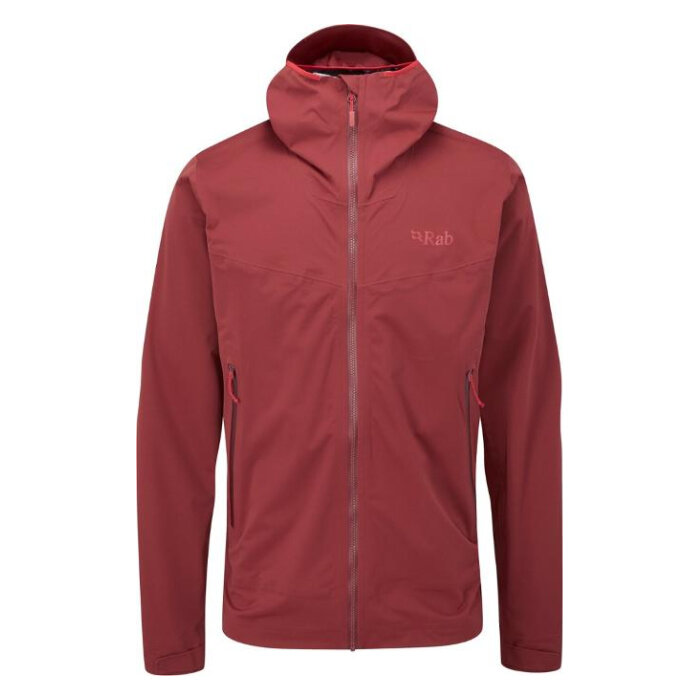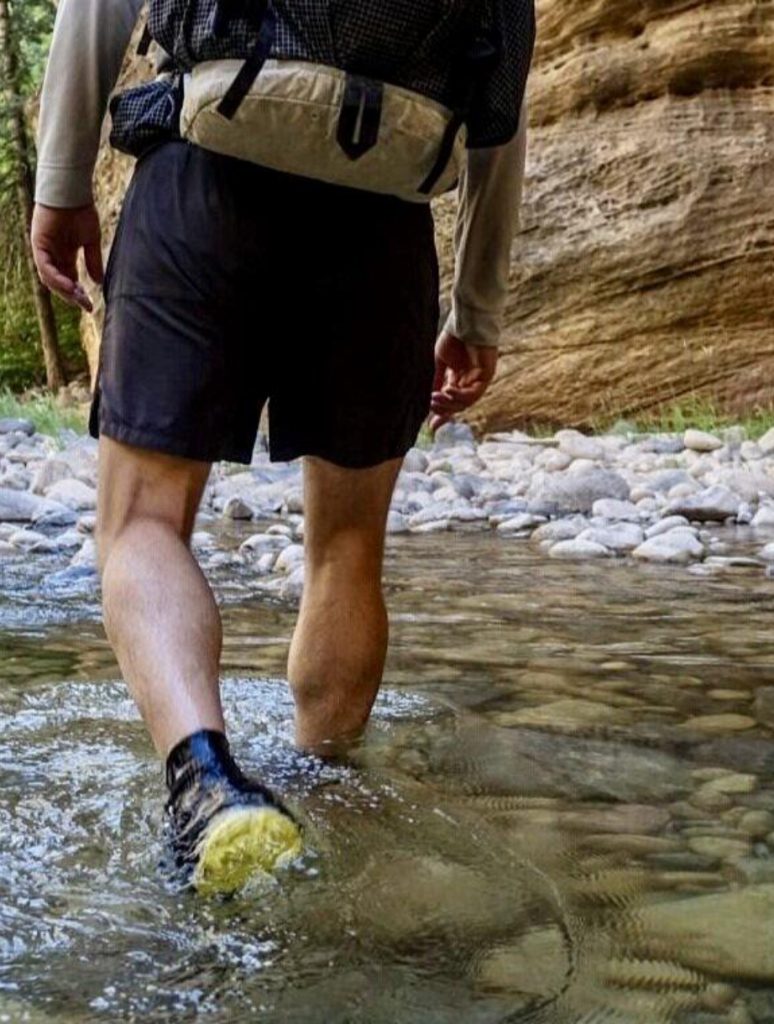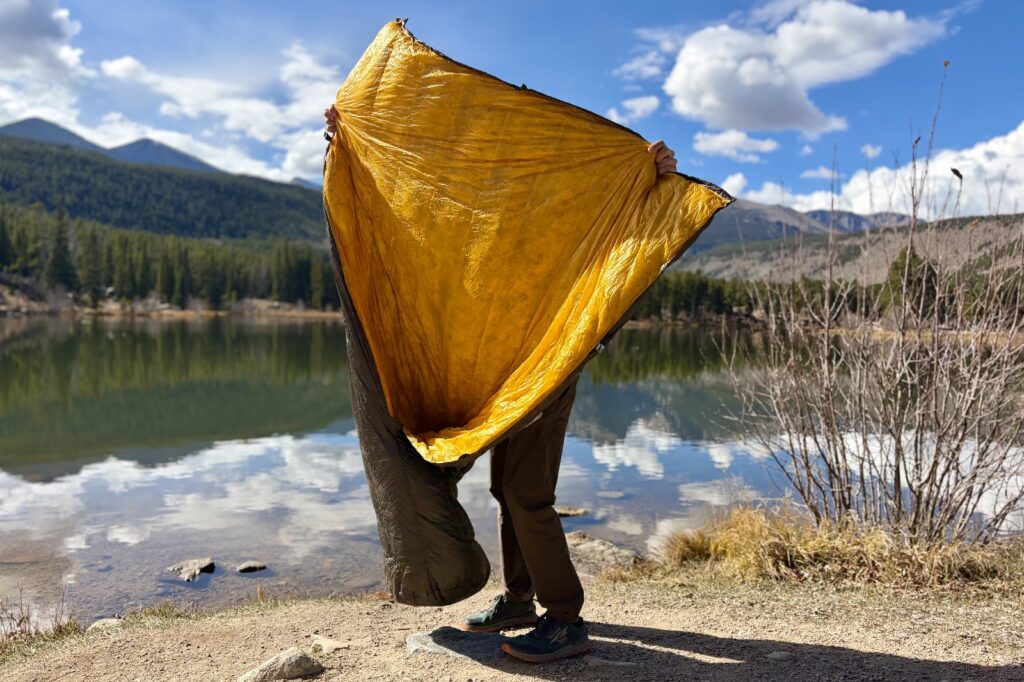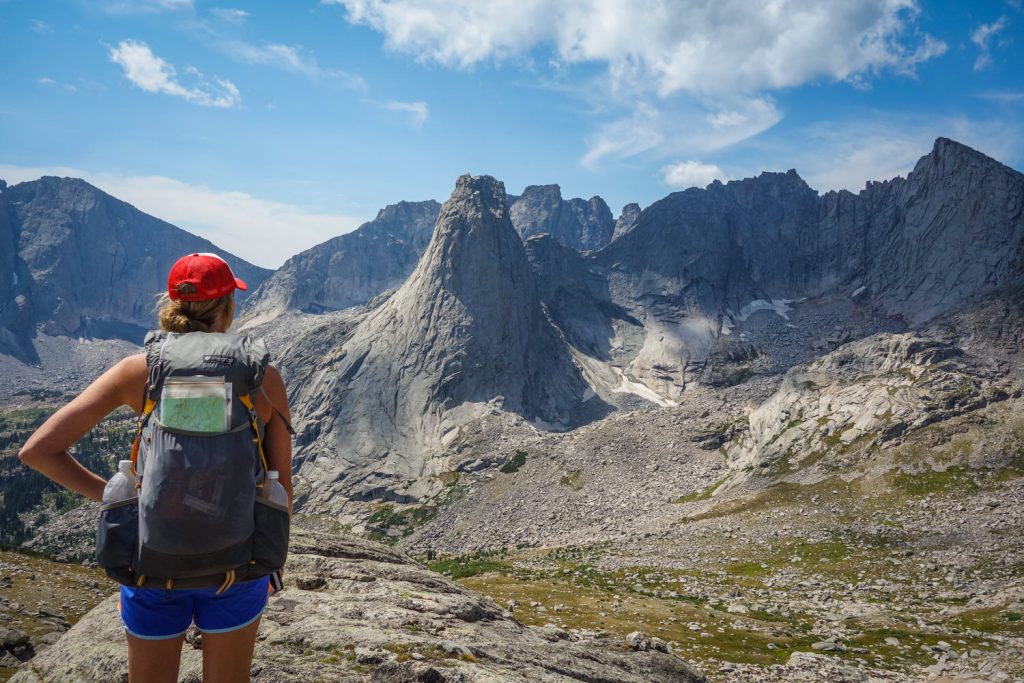
Women’s Backpacking Gear
In the past few years, there’s been a long-awaited shift toward gender equity and accessibility in the outdoor industry. Now more than ever, companies are getting serious about designing quality, high-functioning outdoor gear for women. Women have different body shapes, move differently, sleep slightly cooler (on average), and have unique hygiene considerations.
Not every piece of backpacking gear needs to be gender-specific, but women often find that gear designed explicitly for them works better. Below, we outline several key differences in women-specific gear and recommend some of our favorite items.
Do I Really Need Women-Specific Gear?
Yes and no. When it comes to buying gear of any kind, your decision should ultimately be based on what works best for you. For example, some women find that men’s or unisex backpacks actually fit their bodies better, so it’s important to consider all options. In the end, there’s rarely one clear “best” choice for everyone, and you know your body better than anybody else.
Why Hike Light?
As you look through our recommendations below, you’ll see that we’re big fans of lightweight backpacking gear. The reason is simple: The lighter your backpack, the easier (and more fun in our opinion) your backpacking trip will be.
So whether you’re planning an epic thru-hike or a quick overnight jaunt, keeping pack weight down is key. Most of our gear recommendations below balance weight, cost, and comfort.
Our ultimate goal is to keep our packs as light as possible without sacrificing safety, comfort, or functionality. Lightweight gear does tend to cost more, so if you’re looking for budget-friendly options, take a look through our full Gear Guide for more recommendations.
Women’s Backpacking Packs
When buying a backpack, most women find that women-specific packs offer a more comfortable fit. Women’s packs tend to have shorter torso lengths, ergonomic s-shaped shoulder straps (which contour the chest better), and anatomical hipbelts to transfer weight to the hips comfortably.
When choosing a backpack size, make sure to measure your torso length and hip size before ordering. Many of the backpacks we recommend are lightweight backpacks, meaning they have more minimal frames and tend to be a bit smaller than heavy traditional packs.
This style of backpack is excellent for reducing overall weight, but won’t work well for carrying heavy loads (usually over 35-40 lbs). For more tips on finding the right backpack, checkout our guide to the best backpacking backpacks.
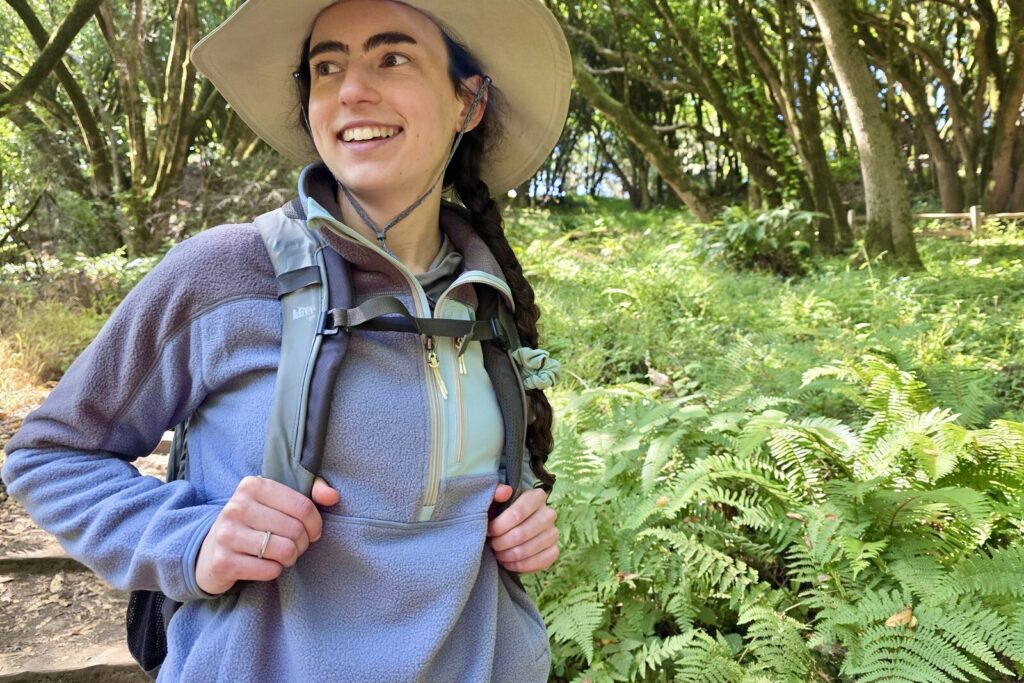
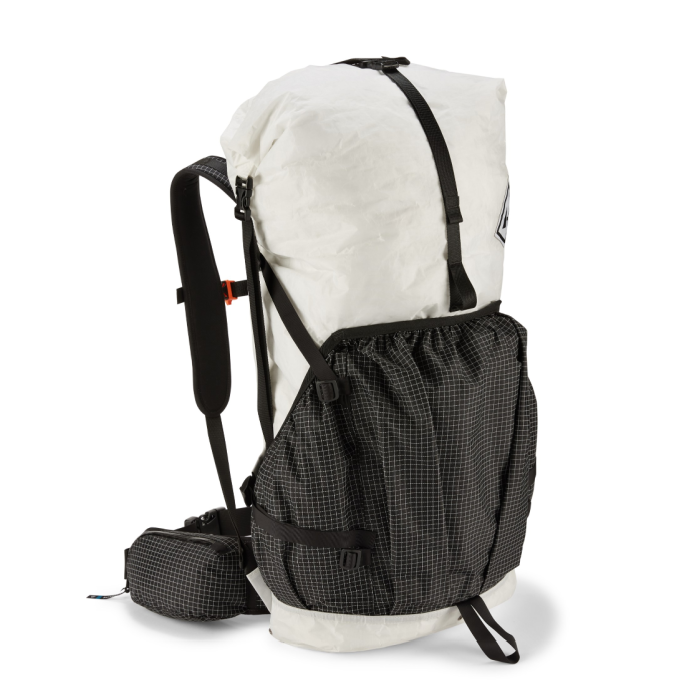
Hyperlite Mountain Gear Southwest 55
Best Minimalist Ultralight Backpack
CleverHiker Rating: 4.7/5.0
Price: $379
Weight: 1 lb. 15.1 oz.(medium)
Volume: 55 L
Max Weight Rec.: 40 lbs
Pros
- Waterproof
- Durable
- Large pockets
Cons
- Minimalist design might not suit everyone
- Not as padded
The Hyperlite Mountain Gear Southwest 55 is a highly effective ultralight backpack focused on minimalism, weather resistance, and durability. Through extensive field testing across challenging terrain and conditions, we’ve found this pack excels over other ultralight packs that compromise durability for weight savings.
The pack’s Dyneema construction is what makes it stand out. Its inherent water-resistant capabilities virtually eliminate the need for a pack liner and provide longer-lasting resistance than coated fabrics. Different denier ratings (50D/150D in the white version, full 150D in the black) allow you to select your optimal balance of weight savings and durability. Mountaineers, bushwhackers, and scramblers will appreciate the enhanced abrasion resistance of the all-150D black version, while strictly trail trotters will be satisfied with the white version.
Premium materials and construction come at a hefty price point, but we think it’s worth every penny for the right people. This thing is built to last and is a worthy investment for long-distance hikers and anyone demanding top performance.
Hyperlite opts for simplicity when it comes to organization. Some people might appreciate more exterior pockets. Still, an extra 9.8 liters of volume is pretty great for what it has. The pack features two hip belt pockets, two easily reachable side pockets, and one giant front pocket—all made from Dyneema.
Hyperlite packs are typically built with seasoned lightweight backpackers in mind. That said, the relatively thin shoulder straps and the minimal organization system may be a stark change for those used to traditional backpacks.
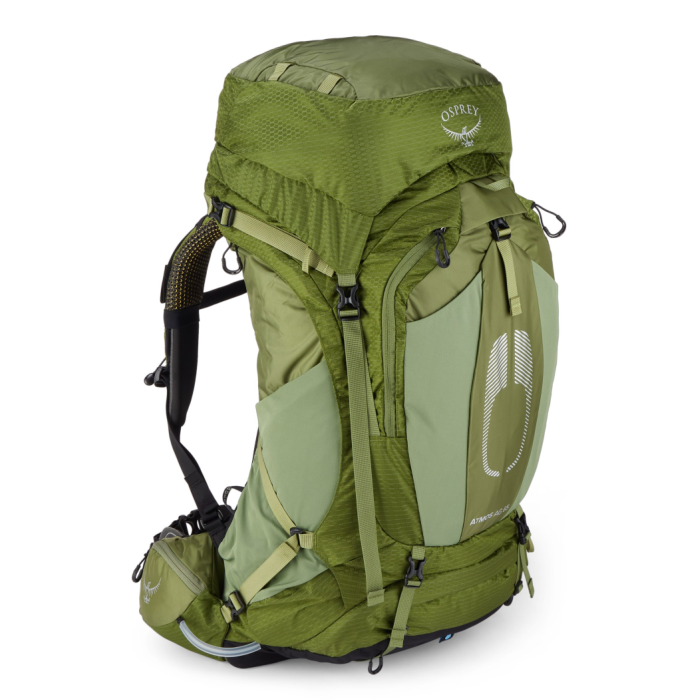
Osprey Atmos 65 / Aura AG 65
Backpacking Backpack with the Best Features
CleverHiker Rating: 4.4/5.0
Price: $370
Weight: 4 lb. 10 oz.
Volume: 65 L
Max Weight Rec.: 40 lb.
Pros
- Can comfortably hold heavier loads
- Breathable & well-padded frame
- Above-average durability
- Sturdy frame transfers weight to hips well
- Very comfortable suspension
- Plenty of room for extra/bulky gear
- Lots of organization
- Very easy to access water bottles
Cons
- Expensive
- Heavy
The Osprey Atmos 65 / Aura 65 is an incredible piece of technical gear, sporting a great feature set, comfortable back panel, durable construction, and huge amount of adjustability. These features combine to create a versatile pack ready for a variety of backpacking situations – but one we think is overkill for most backpackers.
That doesn’t change the fact that it’s still a quality piece of kit. The whole thing has a sense of rigidity to it that admittedly does make getting it on and off a bit cumbersome. But it feels reassuring once it’s situated. We liked the excellent hip belt pockets for how much they could store, and the water bottle pockets are easy to access. There’s also no denying how comfortable the whole experience is. That large mesh panel really does a good job conforming to a body shape to provide great support while reducing hot spots.
However, it’s easy to forget that the Atmos is still very expensive and heavy. And for that weight, you don’t even get a frame that can haul the heaviest loads, its carry limit is barely higher than packs that weigh nearly half as much. Additionally, the Atmos can also be a bit much sometimes, the abundance of features can sometimes make the overall experience more complex than simpler packs.
So in the end, we’re left with a feature-rich backpack that promises a premium experience and delivers on that goal. It’s a good choice for people who appreciate having a wide array of options. But those who prefer a simpler design or a more budget-friendly option should look at other packs.
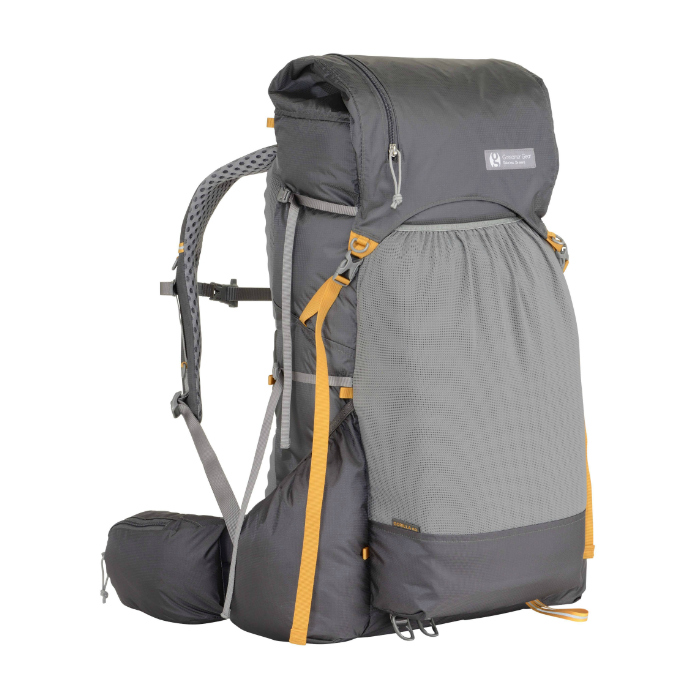
Gossamer Gear Gorilla 50
Well-Priced & Comfortable Ultralight Backpack
CleverHiker Rating: 4.6/5.0
Price: $275
Weight: 1 lb. 15.9 oz.(medium)
Volume: 50 L
Max Weight Rec.: 30 lbs
Pros
- Price
- Stretchy exterior pockets
- Well-padded & comfortable
- Integrated SitLight pad
Cons
- Mesh pocket isn't the most durable
- Unique closure not for everyone
- Not very water-resistant
The Gossamer Gear Gorilla 50 has earned its reputation as a go-to pack for ultralight enthusiasts, and after putting it through its paces on over 600 miles of trail, we understand why. From scrambling through the Spanish Pyrenees to grinding out long days on the PCT, traversing the Olympics, and circling Rainier on the Wonderland Trail, this pack continues to impress us with its ability to balance comfort and weight savings.
At the heart of the Gorilla’s performance is its PVT frame system, which handles loads up to 25 pounds with surprising stability. The hipbelt and shoulder straps deserve a special shoutout. Their breathable mesh and generous padding make long trail days noticeably more pleasant. We did notice some occasional rubbing from the back panel edge during particularly sweaty climbs, but it’s a minor gripe and could be just our personal experience.
What really makes the Gorilla shine are the trail-focused details that show Gossamer Gear’s backpacking experience. The redesigned trekking pole attachments work beautifully. The hipbelt pockets swallow a day’s worth of snacks, and the removable back pad doubles as a welcome lunch seat. Sure, the two-step closure system takes some getting used to, and you’ll need to baby the mesh pocket a bit, but any ultralight pack comes with weight-saving quirks.
For hikers who’ve been thinking about going ultralight but don’t want to sacrifice all their creature comforts, the Gorilla 50 hits a sweet spot. While it might not be our first choice for heavy loads or bush-bashing adventures, it’s become a go-to recommendation for traditional backpacking trips where every ounce counts.
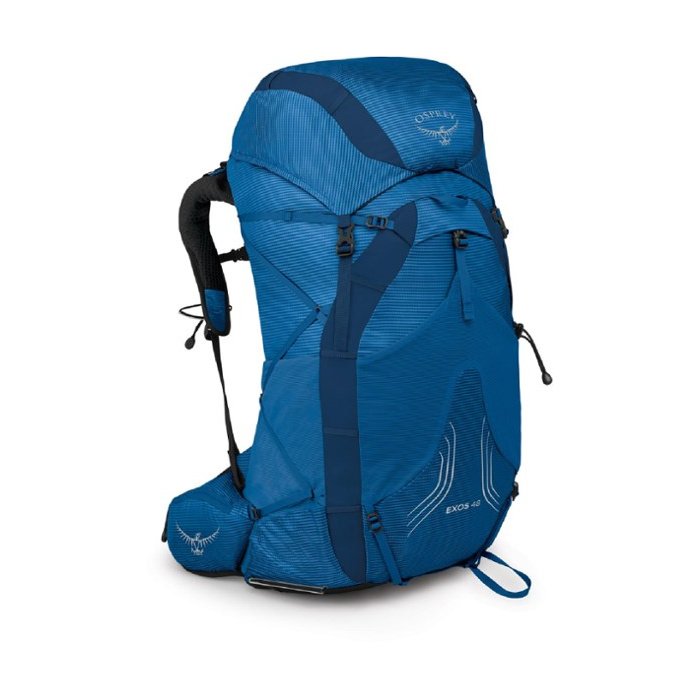
Osprey Exos & Eja 48
Affordable & supportive lightweight backpack
Price: MSRP: $260
Weight: 2 lb. 12 oz.
Volume: 48L
Max Weight Rec.: 35 lbs.
Pros
- Very affordable for the quality
- Lightweight
- Very comfortable
- Good back ventilation
- Very easy to access water bottles
- Adjustable torso
Cons
- Hip belt pockets are a bit small
The Osprey Exos 48 (Men’s) and Eja 48 (Women’s) are long-time favorites of lightweight backpackers because of their comfort, well-ventilated back panel, and approachable price.
The tensioned-mesh frame of the Exos and Eja is sturdier than most lightweight pack frames and can carry heavier loads more comfortably. The newest iteration of the Exos/Eja brought back hip belt pockets – a sorely missed component of the previous iteration – but we find them to be a bit smaller than we prefer. Still, they’re adequate for storing small, commonly used items, like chapstick, a lighter, and a snack.
If you’re looking for the best balance of comfort, weight, and capacity you’ve found it with the Exos and Eja. For hikers who need more space, the larger Exos 58 / Eja 58 have 10L more capacity, but are otherwise the same packs.
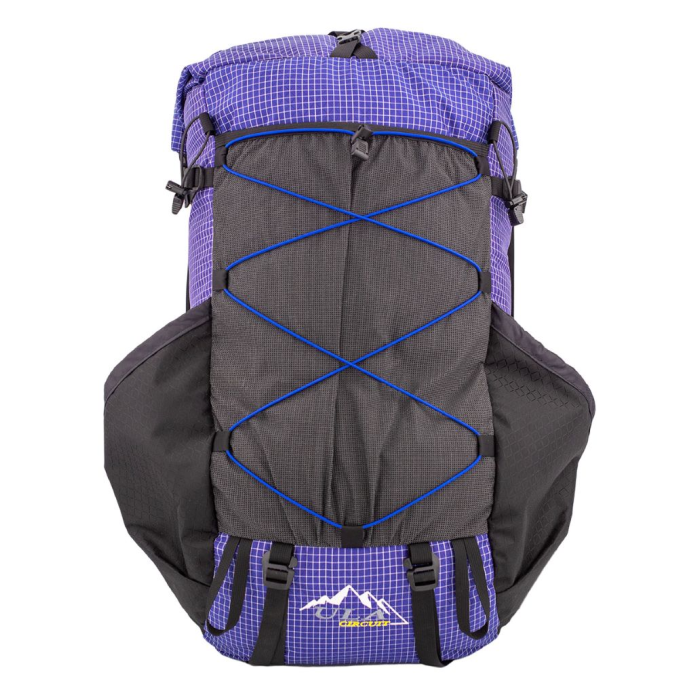
ULA Circuit
Best for Thru Hiking
CleverHiker Rating: 4.6/5.0
Price: $300
Weight: 2 lb. 7.5 oz.
Volume: 68 L
Max Weight Rec.: 35 lb.
Pros
- Excellent hauling capacity for the weight
- Durable construction
- Great feature set for thru-hikers
- BV500 bear vault fits horizontally in pack
Cons
- Back panel offers limited ventilation
- Hip belt pocket zippers a bit stiff
- Water bottle pockets not easy to access
After thru-hiking thousands of miles with the ULA Circuit we can confidently say it’s an exceptionally durable backpack for long distance hiking. If you have your pack weight below 30 pounds the Circuit’s frame will carry your load very comfortably.
CleverHiker Gear Analyst, Heather Eldridge, has used the Circuit for her thru-hikes of the PCT and CDT as well as many small trips. She loves this bag because it has the perfect balance of durability and low weight – making it through multiple thru-hikes of over 2,000 miles each and then still going is no easy feat for an ultralight backpack.
The Circuit now comes with a more durable mesh front pocket, it’s compatible with ULA’s removable Y-strap and bottom strap, and – to be quite frank – it got a much-needed aesthetic makeover.
All the little design elements on the Circuit really make it shine on trail – large, convenient pockets; light, durable fabric; and a minimal, yet highly effective suspension system. The giant hipbelt pockets keep essentials and snacks easily accessible, which are worth their weight in gold for hikers spending long days putting up big miles.
This backpack has an exceptional balance of weight, comfort, and durability, so it’s no wonder the ULA Circuit is consistently called out as a favorite by thru-hikers.
More: ULA Circuit Full Review
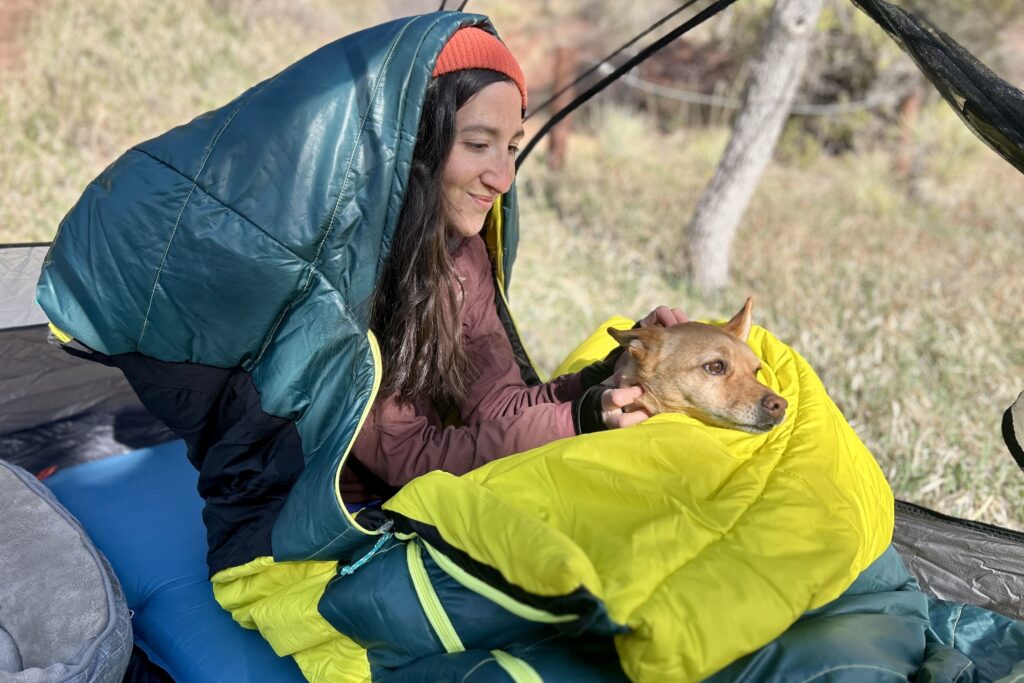
Women’s Sleeping Bags
Buying a women’s sleeping bag is one of the most important purchases you can make to ensure a warm and comfortable night’s rest in the backcountry. In general, women tend to sleep colder than men (often by about 10 degrees), so it’s essential to get a bag with a warm enough temperature rating for the conditions you plan to encounter.
To account for this, women’s bags are usually warmer and have more insulation in the footbox and torso. Women also have different body shapes than men, so women’s sleeping bags tend to be wider in the hips and narrower in the shoulders.
This extra precision will ensure your sleeping bag fits comfortably and optimizes warmth. For more tips on finding the right sleeping bag, check out our guide to the best backpacking sleeping bags.
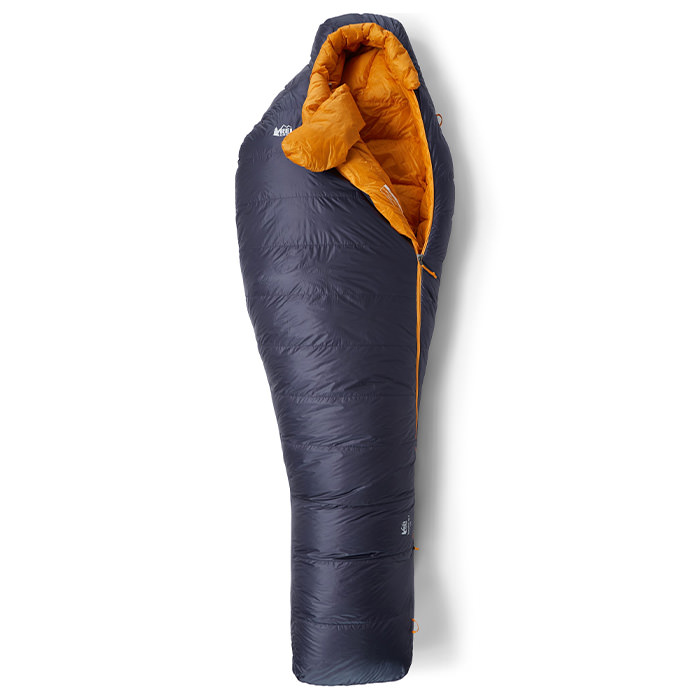
REI Magma 15
Warm Sleeping Bag with Inclusive Sizing
CleverHiker Rating: 4.7/5.0
Price: $400
Comfort Rating: 21°F
Weight: 2 lb. 3.6 oz.
Fill Power: 850
Fill Weight: 23.3 oz.
Pros
- Large variety of size options
- Generous draft collar blocks chill well
- No upcharge for long/wide sizes
- Good price for the warmth
- Stash pocket
- No snag zipper
Cons
- Less spacious in the hood and leg area
The REI Magma 15 has the most extensive size-run we’ve seen offered for sleeping bags, and we’re really excited about the move to provide inclusive sizing. This unisex bag is warmer than their predecessors and have a refined fit that is comfortable for a wide variety of body shapes.
The Magma 15 is comfort-rated to 21°F (as opposed to the 28°F comfort rating of the previous unisex version). A sleeping bag’s EN/ISO Comfort Rating is the temperature at which most cold sleepers will remain comfortable, so those who have a hard time staying warm should be cozy in this bag well below freezing. Warm sleepers can certainly take the Magma 15 into the teens (provided you’re using a well-insulated sleeping pad), so it’s a great winter bag for all.
Part of what makes the Magma bag so warm is its trimmed-down design. The true mummy shape is highly efficient because it eliminates the dead space your body would otherwise have to warm up. Though there’s still some room to move in the Magma, the leg girth is a bit narrower than many similar models. Some hikers may find the space a bit tight, but there are wide models available for each length option (short, medium, long) for those who need a little more wiggle room.
This backpacking sleeping bag is highly compressible for efficient packing. If you’re a cold sleeper or you’re looking for a sleeping bag that’ll excel on high alpine and winter adventures, the Magma 15 is an excellent choice.
More: REI Magma 15 Full Review
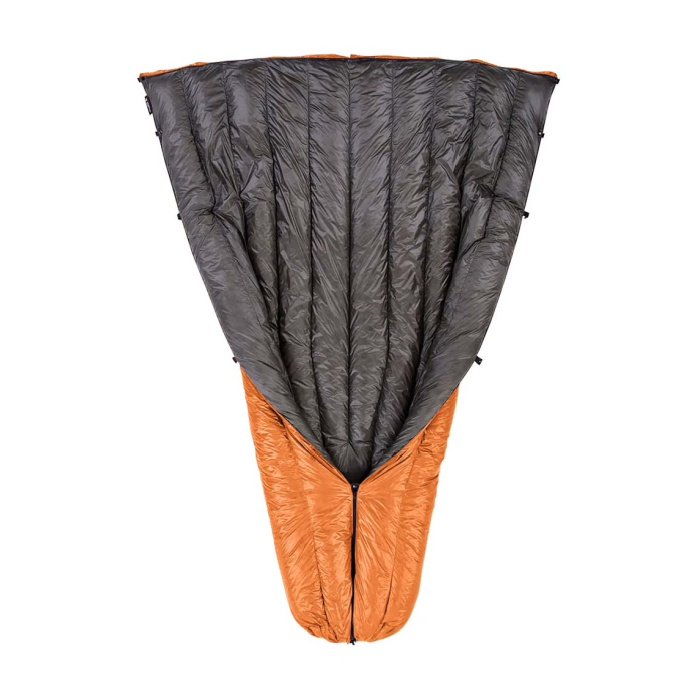
Enlightened Equipment Revelation Quilt 20
Best Backpacking Quilt Overall
Price: $370
Weight: 1 lb. 6.5 oz.
Fill Power: 850 or 950
Pros
- Ultralight
- Well-priced for the quality
- Packable
- Opens fully like a blanket Includes pad connectors
- Responsible Down Standard (RDS) certified
Cons
- Many won’t find it warm enough for sub-freezing trips
- Custom orders have a long lead time (order a stock quilt if you’re in a hurry)
The Enlightened Equipment Revelation has been one of our go-to backpacking quilts for years due to its versatile design, excellent warmth-to-weight ratio, and great price for the quality.
The Revelation can be left open like a blanket on warm nights or cinched up tight when the temperature drops, so it’s a good pick for hikers looking for something they can use for all but the coldest of trips. We’ve found that the 20°F model keeps us warm to right around freezing or just a little below, but cold sleepers may prefer the 10°F model for the extra warmth.
CleverHiker Founder, Dave Collins, swears by the Revelation and has taken it on many of his most epic backpacking trips. From the chilly peaks of Glacier National Park to the much warmer twists of Marble Canyon in Death Valley National Park, the Revelation’s flexible build readily adapts to the conditions.
You can choose to custom order a Revelation to your desired color, size, and temperature rating. We recommend bumping up a size in length and width for full coverage on chilly nights if you sleep cold, or you could consider the EE Enigma quilt. The Enigma has a footbox that’s sewn closed (like a sleeping bag footbox), so it retains a lot more warmth than the Revelation. CH Managing Editor, Ben Applebaum-Bauch, prefers the Enigma, and he’s trusted it for many big backpacking trips – including his CDT thru-hike.
Quality like this will usually set you back a pretty penny, but the Revelation comes in at an amazing price when compared to similar quilts. We’ve been using ours for years, and it’s still one of the best investments we’ve made in our backpacking setup.
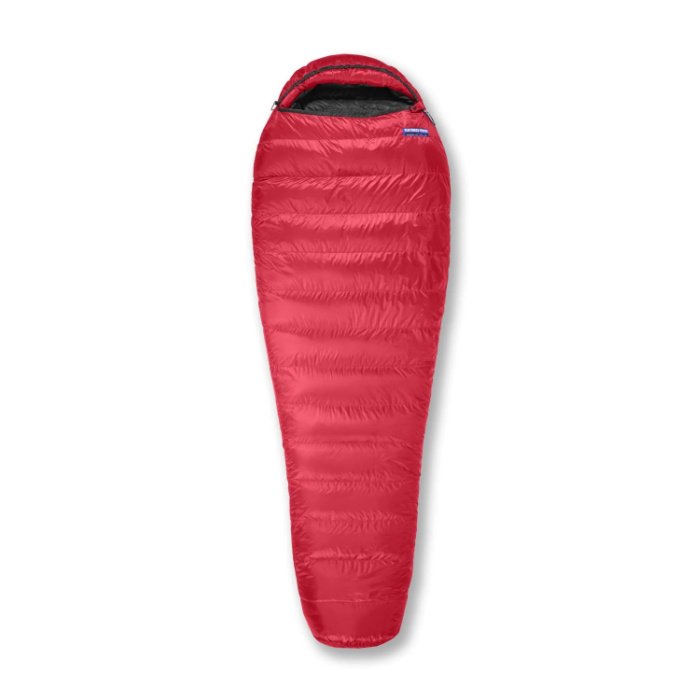
Feathered Friends Swallow YF 20 / Egret YF 20
Best Sleeping Bag for Backpacking Overall
CleverHiker Rating: 4.7/5.0
Price: $490 – $550
Comfort Rating: N/A
Weight: 1 lb. 12.7 oz. / 1 lb. 13 oz.
Fill Power: 900+
Fill Weight: 16.8 oz. / 17.3 oz.
Pros
- Ultralight for a mummy bag
- Highly packable
- Excellent warmth-to-weight ratio
- Large hood can accommodate a pillow
- Snag-free zipper
- RDS certified
Cons
- Expensive
The Feathered Friends Swallow YF 20 and women’s Egret YF 20 are some of the highest quality down bags for backpacking on the market. CleverHiker Senior Gear Analyst, Casey Handley, has used the Egret YF in frigid conditions – including a string of 20-degree nights in Utah, a winter campout in Nevada’s Sheep Mountain Range, and a late-season hike on Broken Top Mountain in Oregon with snow on the ground.
These models are very light, feel soft against the skin, and are filled with responsibly sourced 900+ fill-power goose down – which is about as nice as down comes. This is one of the few instances where we would actually trust a 20-degree bag to keep us warm when the temperature drops to 20 degrees (Feathered Friends doesn’t list EN temperature ratings, but we’ve found their ratings to be more conservative than most of the competition).
One of the biggest features that makes them so warm is the very generous draft tube – a down-filled tube that blocks cool air from entering through the zipper. Many premium sleeping bags include a draft tube, but the one on the Swallow and Egret is more robust than others and really locks in the warmth. Other warmth-preserving features include a draft collar around the neck and hood and a fitted but comfortable cut that eliminates dead space inside the bags.
Certainly the high price is one of the first things you’ll notice about the Swallow YF and Egret YF, but we can assure you they’re worth every penny if you’ll use them often. Ounce-counting backpackers might even prefer the Swallow UL and Egret UL which cost a bit more but provide the same reliable warmth as their YF counterparts at an even lower weight.
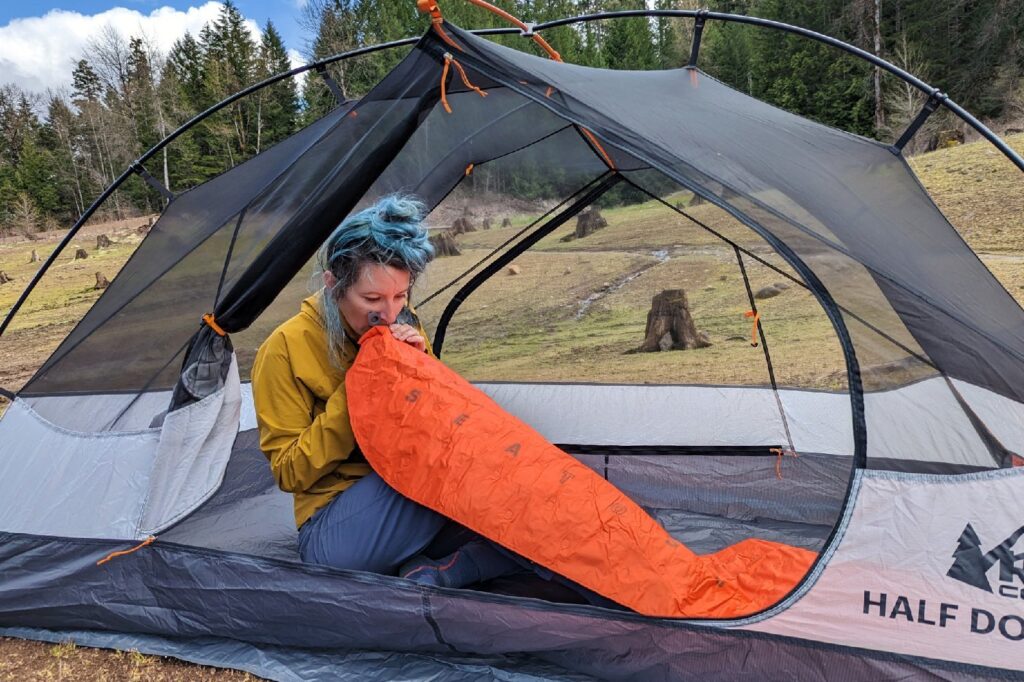
Women’s Sleeping Pads
Backpacking sleeping pads tend to be mostly unisex by design, though some companies do make women-specific models. Most women find that unisex pads work perfectly well, but women do tend to sleep colder than men, so it’s important to choose a sleeping pad with a high R-value, which will provide more insulation from the cold ground.
We generally recommend air pads over foam pads because they tend to be far more comfortable. And similarly to our other gear recommendations, we prefer lightweight sleeping pads to keep our packs comfortable on the trail. For more tips on finding the right sleeping pad, check out our full guide to sleeping pads.
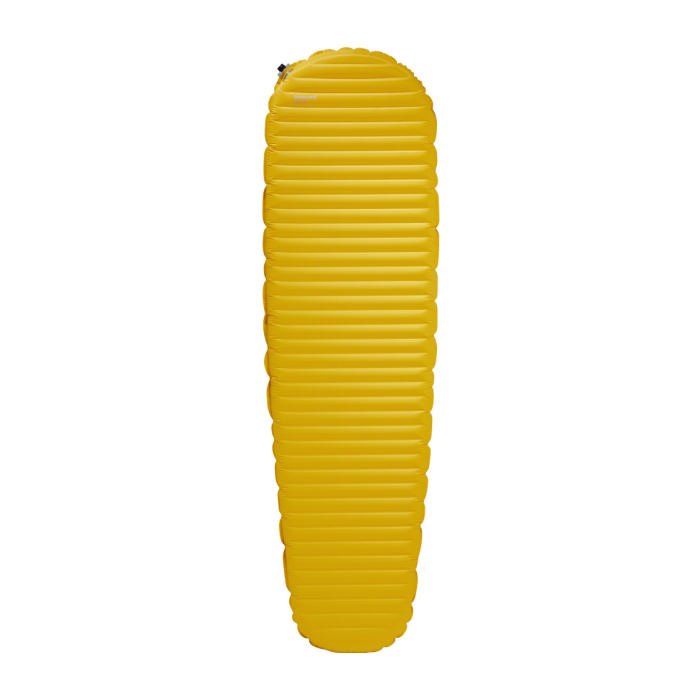
Therm-a-Rest NeoAir XLite NXT
Best Backpacking Sleeping Pad Runner Up
CleverHiker Rating: 4.6/5.0
Price: $199.95 – $239.95
Weight: 13 oz.
R-Value: 4.5
Thickness: 3 in.
Pros
- Exceptional warmth-to-weight ratio
- Above-average comfort
- Significantly quieter than previous model
- Durable for the weight
- Highly packable
Cons
- Expensive
- Slightly slower inflation/deflation
- Below-average pump sack
Therm-a-Rest’s NeoAir XLite NXT is easily one of the best 3-season sleeping pads on the market. Several members of the CleverHiker team have a total of over 1,000 miles of experience with this pad and you’ll often find it in our packs during spring, summer, and fall trips. The XLite has a rare combination of comfort, warmth, and weight that make it tough to beat for backpacking.
The newest NXT version of the XLite has a slightly higher R-value and is 3 inches thick, so it’s a bit warmer and cushier than before. We’ve found the insulation good enough to stay comfortable in temps all the way down into the low 20s when paired with a quality sleeping bag, which is really incredible for a pad this light. CleverHiker Editor-in-Chief, Dave Collins, recently took the XLite NXT on a snowy late-season trek through Idaho’s Sawtooth Mountains and stayed perfectly warm and comfortable each night.
Keeping pack weight down on backcountry trips is critical, and the XLite NXT is among the absolute best this arena. At just 13 ounces, the XLite is one of the lightest insulated pads on the market. And you’d be hard-pressed to find another option that offers the same warmth or durability at this weight.
Ultralight gear tends to be on the delicate side, but that’s not the case with the XLite. With just a little care during campsite selection, this pad can last for thousands of miles. Senior Gear Analyst, Casey Handley, took the XLite NXT on a 300-mile section of the Arizona Trail – a notoriously prickly path – and it held up without incident despite some lazier evenings where campsite clearing fell off the priority list. Still, the XLite is an air pad and accidents can happen. The included repair kit makes field fixes easy, and the valve can even be replaced if it fails – a fairly unique feature for an air pad.
The main knock on previous XLite models was the crinkly sound they make when shifting around. We’re happy to report that the NXT is much quieter than previous versions. We’ve tested it many times with tentmates by our side and camp neighbors nearby with no complaints. Don’t expect complete silence though – we’d say the XLite NXT is now just about as quiet as most air pads – they all make a little noise.
The other minor inconvenience with the XLite comes in the form of ease-of-use. The pump sack that’s included with the XLite is pretty basic, and isn’t as efficient as the top competitors. Additionally, the XLite doesn’t have a dump valve, so you’ll have to squeeze air out of the pad when it’s time to pack up camp in the morning. This will slow down the packing process a bit, but it’s not a dealbreaker.
All things considered, the NeoAir XLite is a truly exceptional sleeping pad that we’ve put through the wringer over thousands of trail miles. It’s an all-time great backpacking sleeping pad and is clearly one of the best on the market.
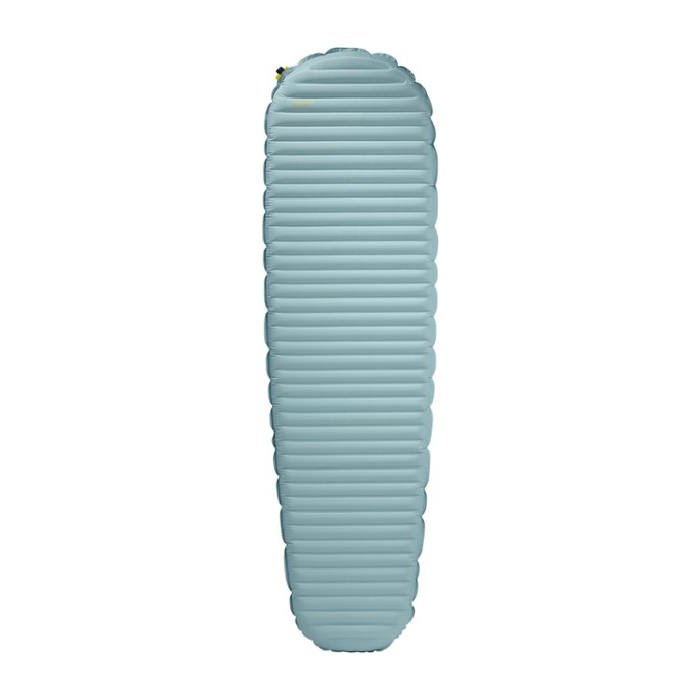
Therm-a-Rest NeoAir XTherm NXT
Best Sleeping Pad for Cold-Sleepers & Winter Backpacking
CleverHiker Rating: 4.6/5.0
Price: $240
Weight: 1 lb.
R-Value: 7.3
Thickness: 3 in.
Pros
- Exceptional warmth-to-weight ratio
- Very warm (suitable for winter use)
- Lightweight
- Above-average comfort
- Compact for a 4-season pad
- Very durable for an air pad
Cons
- Expensive
- Slower inflation/deflation
- Slight crinkle sound
- Below-average pump sack
The Therm-a-Rest NeoAir XTherm NXT is the warmer and more durable sibling of the XLite above. This pad is our top recommendation for cold sleepers and hikers heading out for adventures in the winter chill. We loved the previous XTherm, but the latest NXT model is even better – it’s warmer, thicker, and even a touch lighter than before.
The R-value of a sleeping pad tells you how much insulation it provides – the higher the number, the warmer the pad. With an R-value of 7.3, the XTherm NXT is one of the warmest backpacking sleeping pads on the market. It’s also considerably lighter than most other highly insulated sleeping pads, so it’s a great buy for hikers looking for the best balance of warmth and weight.
The XTherm is the pad our team members opt for when we head out on winter backpacking adventures. In our testing, even in absolutely frigid temperatures and several inches of fresh powder, we’ve stayed warm and comfortable thanks to the XTherm.
This pad also has a durable layer of 70-denier fabric on the underside to combat wear and prevent punctures. Its level of durability is among the best we’ve ever tested for backpacking air pads. The XTherm does make a slight crinkle sound when you shift around on it, but its considerable strengths far outweigh this minor downside.
With a weight that’s lower than the typical 3-season pad but an R-value ready for serious winter adventures, it’s no wonder the NeoAir XTherm NXT has been a fan favorite for many years.
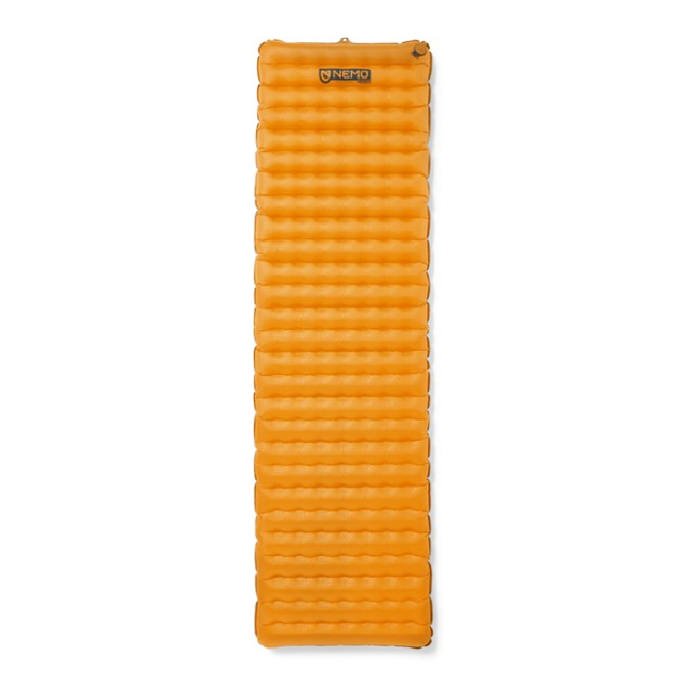
NEMO Tensor Insulated
Cushy, rectangular sleeping pad with quick deflation
Price: $180 – $200
Weight: 15 oz.
R-Value: 4.2
Pros
- Comfortable
- Quiet
- Warm
- Many size/shape options
- Quick inflation/deflation
- Pump sack included
Cons
- Expensive
- Less durable than some
The NEMO Tensor Insulated sleeping pad is thick, comfortable, and quieter than almost any air pad we’ve tested. So if you’re looking to avoid the crinkle sound some pads have, the Tensor is an excellent option.
Another thing that sets the Tensor apart is the wide variety of shape and size options, including mummy, rectangular, and the elusive regular/wide model. The rectangular models are popular, as they allow your feet to rest wider apart when back sleeping. This, along with 3 in. of thickness, makes the Tensor a real stand-out when it comes to comfort.
The Tensor also comes with one of the best pump sacks on the market, making inflation fast and easy. On top of that, the zero-profile valve allows for quick deflation and simple micro-adjustments.
We’ve been big fans of the NEMO Tensor since the first model hit the shelves, and we still rock it for trips where extra comfort is a top priority.
More: NEMO Tensor Trail Ultralight Insulated Sleeping Pad Full Review
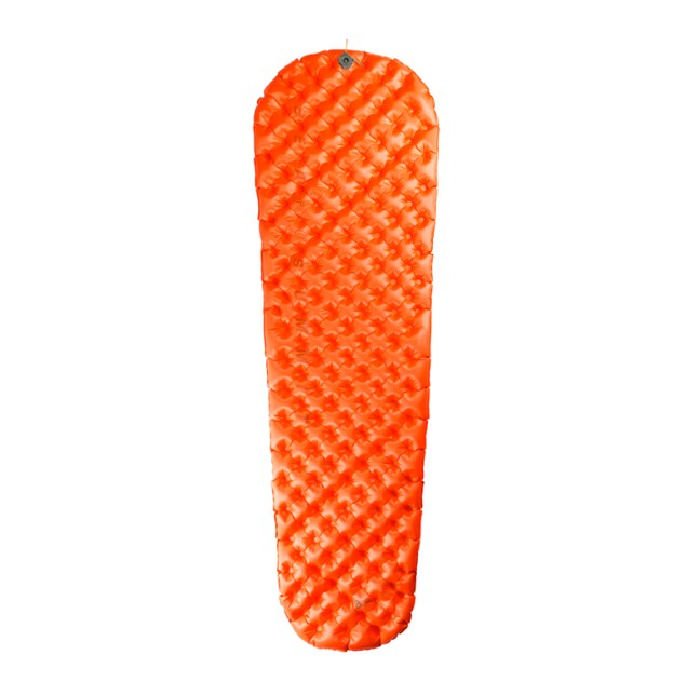
Sea to Summit Ultralight Insulated
Best Value Sleeping Pad for Back Sleepers
CleverHiker Rating: 4.2/5.0
Price: $180
Weight: 1 lb. 0.9 oz.
R-Value: 3.1
Thickness: 2 in.
Pros
- Lightweight
- Comfortable for back-sleepers
- Less expensive
- Above-average durability
- Quick inflation/deflation
- Excellent valve design for micro-adjustments
- Wider than most pads
Cons
- Can bottom out when shifting around
- Slightly rubbery feel/sound
- Heavier than some
- Valve location isn't ideal
The Sea to Summit Ultralight Insulated pad (view women’s) is one of the most durable air pads we’ve tested and is also comparable to its sibling, the Ether Lite XT, above. And it also features Sea to Summit’s “air sprung cells” that provide cushy comfort and feel surprisingly like your mattress at home.
The benefit the Ultralight has over the Ether Light is its more affordable price tag. The Ultralight is also just about as warm and comfortable as the Ether Light, but it’s a tad lighter and slightly less bulky. So what made this pad rank below the Ether Light? It really comes down to comfort.
With just 2 inches of thickness, some users will likely bottom out when shifting around on the Ultralight, and it probably isn’t the best fit for side sleepers. That said, it still provides a very comfortable night’s rest for back- and stomach-sleepers who tend to stay put when snoozing.
While the Ultralight may not be the right pad for everyone, it has a good valve system that’s quick and easy to use, it’s more durable than the average air pad, and it’s decently light and warm. So if you’re a back-sleeper in the market for a comfortable, lightweight, and sturdy backpacking sleeping pad that costs less than most of its competitors, the Sea to Summit Ultralight is a great choice.
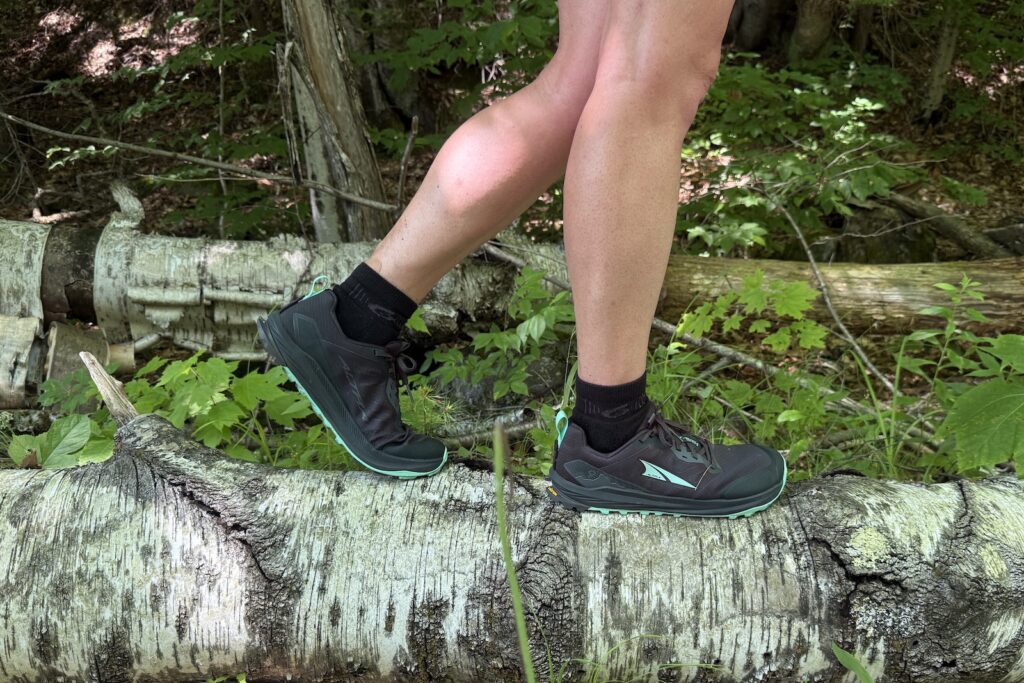
Women’s Footwear
Similar to everyday shoes, most people choose backpacking footwear designed specifically for their gender. However, everybody’s feet are different, so there’s no hard and fast rule to this. The main difference between men’s and women’s footwear comes down to the shape of the shoe.
Women’s shoes and boots tend to be narrower in the heel and wider in the toe box. Men’s footwear also tends to weigh slightly more and rise higher on the ankle. You’ll notice that most of our recommendations below are lightweight trail running shoes, rather than traditional hiking boots.
Check out this article to learn why: 5 Reasons to Ditch Your Hiking Boots. In short, trail runners are light, comfortable, and breathable. They offer excellent traction and can often be worn right out of the box with minimal risk of blisters. Like many thru-hikers, we’ve hiked thousands of miles through some of the roughest terrain on the planet in trail runners, and we love the benefits they provide. We very rarely wear boots while backpacking anymore unless we expect to encounter winter snow conditions.
That said, footwear is a highly personal and meaningful choice, so it’s best to go with whatever trail shoe or hiking boot feels most comfortable to you. Always remember to order up a half or full shoe size because your feet will swell on long hiking days. For more tips on finding the proper footwear, check out our full guide to the best women’s hiking shoes. You may also want to visit our Footwear Homepage, where we cover the best boots, sandals, and everything in between.
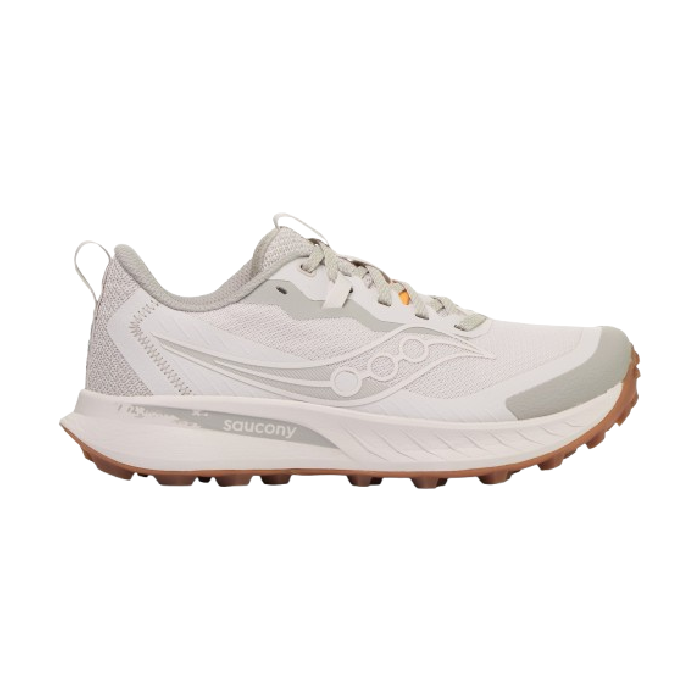
Women’s Saucony Peregrine 15
Best Women’s Trail Running Shoes Overall
CleverHiker Rating: 4.7/5.0
Price: $145
Weight (Pair): 1 lb. 1.2 oz.Women’s Size 8.5
Heel-to-Toe Drop: 4 mm
Cushioning: Moderate
Best For: Mixed Terrain
Pros
- Slipper-like comfort
- Highly breathable
- Great traction
Cons
- Mesh upper might not hold up to high abrasion
- May constrict very wide feet
We’ve been running in the Saucony Peregrines for many years now, and we love them for their exceptional comfort and aggressive traction. Whether it’s a rocky mountain route, a muddy forest trail, or a groomed trail in our favorite local park, the Peregrines bite into the terrain and provide a confident ride.
In our testing of the updated 15, we found them to handle like a dream on a wide variety of terrain from slippery, leaf-covered trails to muddy singletrack. The mesh uppers have a nice amount of give, keeping our feet comfortable, even after long hours.
If you’ve been a longtime fan of the Peregrines like we have, you’ll be happy to know that the well-padded tongue with a gusseted design does an excellent job of preventing debris from entering through the top of the shoe.
The mesh upper is woven tightly for a good blend of durability and breathability, and several reinforced areas add to the longevity of this shoe. The fit of the sock liner is on the narrow side, but wide sizes are available if you need more wiggle room.
We recommend this shoe for those who frequently run on tricky terrain and require unwaveringly reliable traction. This versatile trail shoe comes at a great price and will keep going for hundreds of miles.
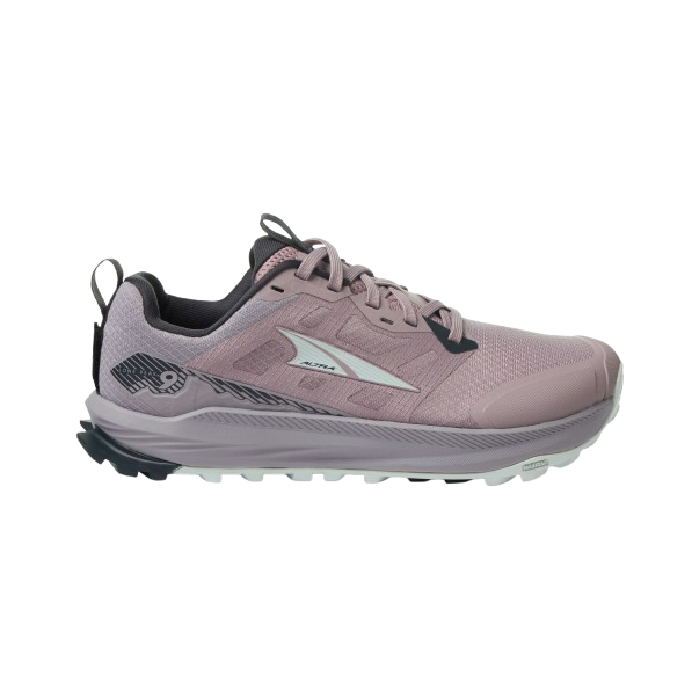
Women’s Altra Lone Peak 9
Best Hiking Shoes for Long-Distance & Thru-Hikers
CleverHiker Rating: 4.7/5.0
Price: $140
Weight (Pair): 1 lb. 3 oz.
Heel-to-Toe Drop: 0 mm
Pros
- Roomy toe box
- Cushion more responsive than previous models
- Ultralight
- Breathable
- No break-in needed
- Built-in gaiter attachment
- Wide sizes available
- Secure heel cup
- Perfect lace length
Cons
- Zero-drop takes some getting used to
- Not as cushioned as other trail runners
- Not as durable as some
- Not supportive enough for heavy loads
Like other Lone Peak models, the Altra Lone Peak 9 is one of our favorites when we want to go ultralight due to its low weight, grippy outsole, and roomy toe box. This iteration of the Lone Peaks hit the market with some improvements over the previous versions – the upper material is a more durable ripstop nylon, the outsole offers more foot protection, the overall design of the shoe is more sleek and streamlined, and the cushion is slightly firmer and more responsive.
If you’ve never tried an Altra shoe before, the first thing you need to know is that they are zero-drop, meaning your heel and toe sit at the same height in the shoe as opposed to having a higher heel. Trying these shoes on is a great start to see what drop height best fits your feet.
Lone Peak enthusiasts have been lamenting the downfall of durability since the Lone Peak 4.5s. However, the Lone Peak 9 sports a reinforced upper and more rugged outsole. Having said that, durability will always be part of the tradeoff when you want a lighter shoe. Yet, the combination of lightness and durability creates a standout shoe that is competitive with others on the market. The Lone Peaks are about as light as you can get for a long-distance shoe. Those seeking a low weight and a comfier fit that allows for natural movement should keep them at the top of their list.
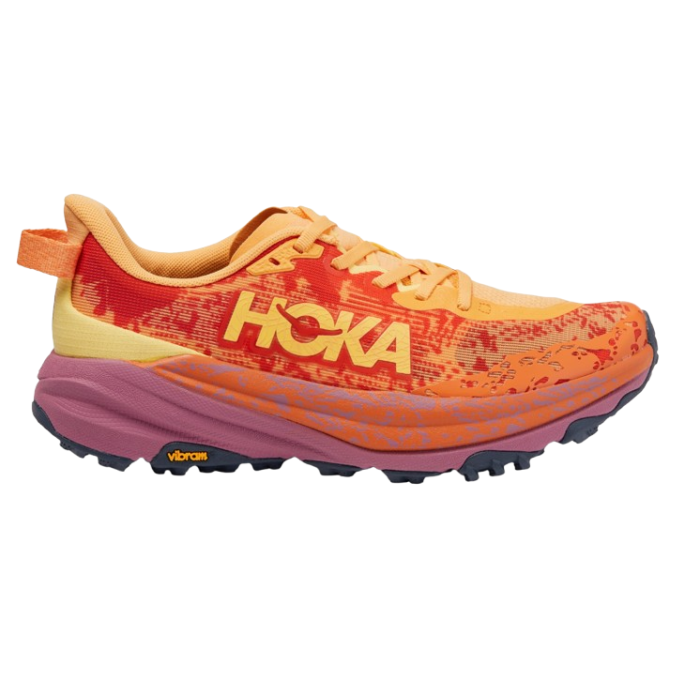
Women’s HOKA Speedgoat 6
Best Trail Running Shoes for Wide Feet
CleverHiker Rating: 4.0/5.0
Price: $155
Weight (Pair): 1 lb. .4 oz.
Heel-to-Toe Drop: 5 mm
Cushioning: Balanced
Best For: Trail Running, Hiking
Pros
- Aggressive tread
- Balanced cushion
- Wide sizes available
- Durable
Cons
- High volume fit will swim on some wearers
- Ankle cuff chafes ankle bones
- Feels stiff
- Lacks ground feel
The HOKA Speedgoat 6s are the latest in this series of high performance, maximum cushioning trail running shoes. Popular among a wide variety of trail enthusiasts, we had significant issues with fit. However, if you can dial that in, these will become your go-to shoe, especially for those with wider feet.
The ample cushioning makes the Speedgoats highly effective at protecting your feet on rocky terrain, reducing stress on your joints on hard-packed surfaces, and maintaining support over long distances. This is why many long-distance backpackers use these as hiking shoes as well. We recently took the Speedgoats on a multi-day backpacking trip on Michigan’s North Country Trail, and our feet were still feeling fresh by the end of long days thanks to the cushy midsoles.
While the plush midsole makes the Speedgoats a common pick among ultrarunners who need all-day comfort, those who keep weekly mileage lower still have plenty to gain by choosing these shoes. The Vibram Megagrip outsole features deep, sticky lugs that excel on everything from loose dirt to granite slab. This versatile traction compound allows you to tackle a wide array of different trails with just this one pair of shoes.
Of course no shoe is a one-size-fits-all, and the Speedgoats won’t be everyone’s cup of tea. The thick midsole means you lose out on a fair bit of ground feel, and runners who aren’t used to the stack height (31 millimeters at the heel) may find these shoes somewhat unstable on rocky or off-camber routes.
Additionally, we found the Speedgoats to be much too high volume and exceptionally wide. Our feet were swimming and sliding, but for those who struggle to find enough space in their athletic shoes, these might be just the ticket. Our biggest complaint was the fit of the higher than average ankle cuff, which chafed us relentlessly despite various sock pairings.

Women’s Oboz Sawtooth X WP
Highly Supportive Hiking Shoes That Hold Up to Hard Use
CleverHiker Rating: 3.8/5.0
Price: $165
Weight (Pair): 1 lb. 12.2 oz.
Heel-to-Toe Drop: 8 mm
Pros
- Exceptional durability
- More supportive than most hiking shoes
- Excellent traction
- Wide toe box
- Surprisingly quick break-in for such a stout shoe
- Waterproof
- Wide sizes available
Cons
- Heavy/bulky
- Support is overbuilt for some
- Waterproofing limits breathability
Thanks to their signature premium insoles, the Oboz Sawtooth X WP are some of the most supportive hiking shoes we’ve tested. The molded arch and heel cup, cushy midsoles, and exceptional traction make this shoe a great choice for challenging terrain – especially for backpackers who tend to carry heavier loads over 40 pounds.
The Sawtooths have been a star in Oboz’s lineup of trail shoes for years, and this tenth anniversary edition stays true to the heart of the original while improving upon some key performance features. The reimagined midsole is more durable and supportive, and the outsole has stickier rubber with a new lug pattern for better traction on variable terrain.
The traditional-style Sawtooths start a little stiffer than other pairs, so we recommend breaking them in before taking them on any big trips. But after you get past this initial period, you’ll have a comfy shoe that can withstand multiple years of hiking.
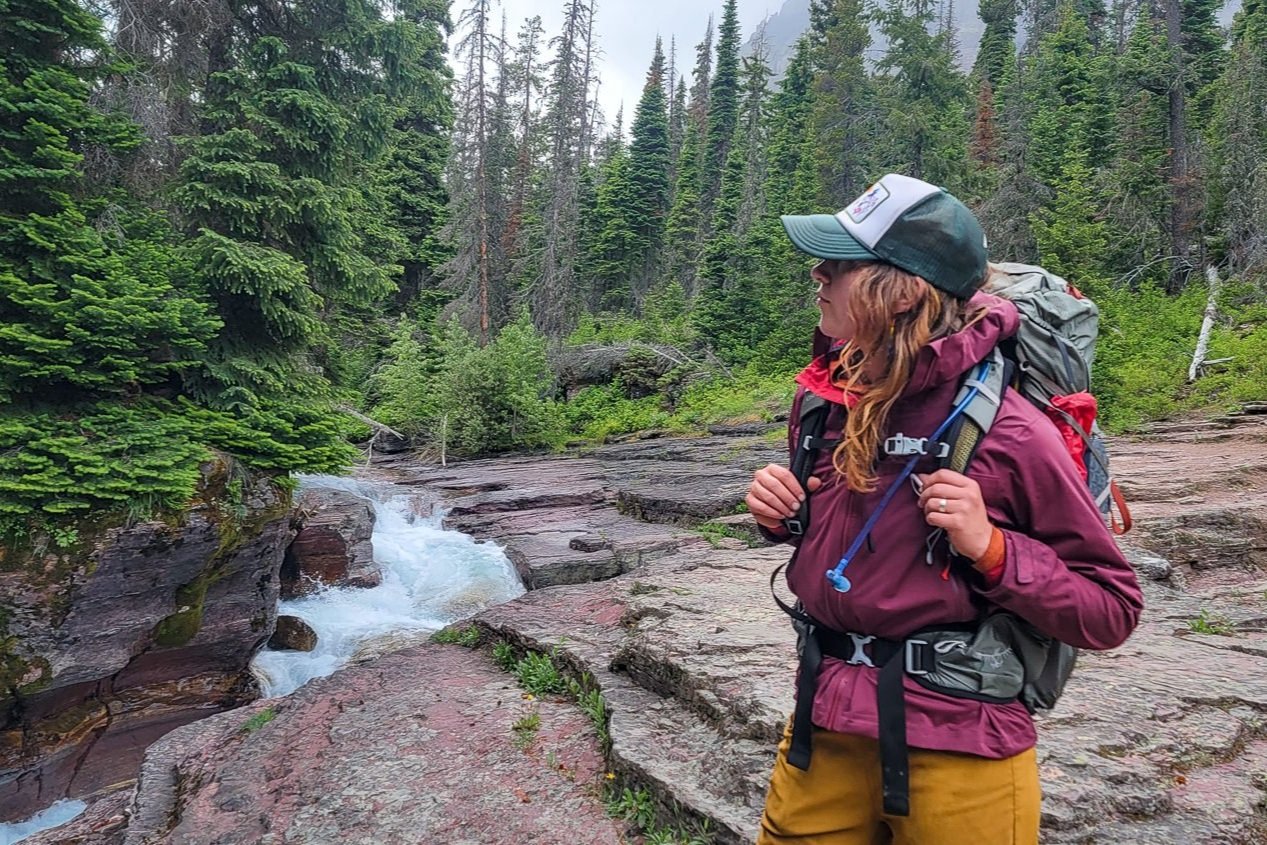
Women’s Raincoats
When heading into the backcountry, you’ll always want to bring a trusty raincoat to stay safe and comfortable. A lot of people backpack with coats that are far too heavy and bulky for what they actually need.
You can save a surprising amount of weight and space by choosing a lightweight rain shell over a mountaineering coat. If you really want to go light, some minimalist jackets cut out features like hand pockets and pit zips, but we generally like having those comforts.
Below you’ll find a few of our favorite rain jackets that balance functionality, comfort, and weight. For more tips on finding the right rain jacket, check out our guide to the best rain jackets.
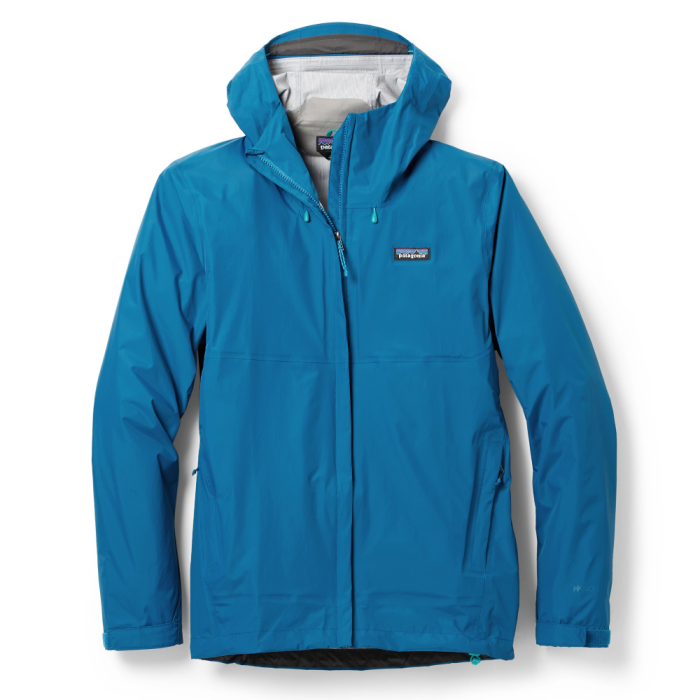
Patagonia Torrentshell 3L
Best Rain Jacket Overall
CleverHiker Rating: 4.8/5.0
Price: $179
Listed Weight: 14.1 oz. / 12.4 oz.(men’s / women’s)
# of Vents: 2
Pros
- Durable materials
- High-quality construction
- Deep pockets
- Pit zips
- Stylish fit
- Strong hem & sleeve ties
- Packs small into its own pocket
- Hood rolls up
- Tons of colorways
Cons
- A bit heavy/bulky for extended backcountry trips
- A bit baggy in sleeves
- No external chest pocket
The Patagonia Torrentshell 3L (men’s / women’s) has been at the top of our list for many years, and for good reason. It’s one of our go-to rain jackets and all-time favorites. From 150-day thru-hikes of the CDT including torrential downpours, high-alpine blizzards, and drizzly fall weather, to trips skiing, camping, and hiking the local trails, this jacket is a durable, affordable workhorse.
The Torrentshell features laminated triple-layer construction that makes it protective in sustained rain, but still feels impressively lightweight on your body. The hood is adjustable and features a large visor to keep the rain out of your eyes and off your face, but it also rolls away easily with a cord and hook when not in use.
For a rain jacket, the Torrentshell is cozy. A soft microfleece lining at the neck adds a soft-to-the-touch feel and wicks away moisture with ease. This jacket has two hand warmer pockets as well as storm flaps – overlapping material that covers the main zipper and pit zips to help you stay dry.
Even though it’s a bit bulky, the Torrentshell still packs down small into the left hand warmer pocket and comes with a convenient carabiner loop so you can keep it easily accessible when the skies open up.
The only major complaint we have about the Torrentshell is its weight. At 14.1 ounces for the men’s version and 12.4 ounces for the women’s, there are other jackets on this list that are better suited for long-distance trips where shaving pack weight is important. So if you’re considering the Torrentshell exclusively for backpacking, we’d recommend other options on this list.
Though it’s not as airy or compressible as some, we highly recommend it for adventures when stormy conditions are inevitable. The Torrentshell is a versatile, reasonably affordable, and very durable jacket that we recommend for all-around use.

Outdoor Research Helium
Most Affordable Ultralight Rain Jacket
CleverHiker Rating: 3.9/5.0
Price: $170 (men’s) / $180 (women’s)
Listed Weight: 7 oz.
# of Vents: 0
Pros
- Ultralight
- Less expensive
- Packs down very small
- Key clip in hand pocket
- Angled chest pocket
- Handwarmer pockets in women’s version
- Adjustable hood
- Many colorways
Cons
- No pit zips
- No hand pockets in men’s version
- No cuff tightening systems
When it comes to ultralight jackets, the Outdoor Research Helium (men’s / women’s) is one of the most practical options on the market. While it weighs almost the same as the ZPacks Vertice and the Montbell Versalite – just over six ounces – it’s less expensive and offers many of the same features.
CleverHiker Managing Editor, Ben Applebaum-Bauch, hiked the 3,000-mile Continental Divide Trail in this jacket and it held up well in most storms with plenty of room underneath for a lightweight down puffy. CH Gear Analyst, Heather Eldridge, also spent a week backpacking in Glacier National Park with this jacket and had no complaints – it kept both of them dry, comfortable enough, and it took up little space.
The Helium has a large chest pocket that makes access to small items easy and fast. This pocket is also the carrying case for the Helium, and it packs down into one of the smallest, most efficient packages on this list, perfect for backpacking and fastpacking.
This jacket is fairly thin and will wet out faster than others in really heavy rain, especially where backpack straps sit. Also, the men’s version doesn’t have handwarmer pockets, which we’ve found inconvenient on and off trail. This isn’t a dealbreaker for us, but we’d prefer the extra storage like the women’s version – instead, we bring waterproof gloves on cold, wet trips.
All-in-all, you cannot beat the price-to-weight ratio of the Helium. If keeping your overall pack weight low on long summer hikes is important to you, or you need a basic layer for cloudbursts and occasional summer storms, the ultra-packable Helium offers a stellar bang for your buck.
Pros
- Comfortable (stretchy)
- Quiet
- Breathable
- Lightweight
- Flattering fit
Cons
- A bit expersive
- No pit zips
- Few adjustments
- Slime fit isn't for everyone
- Runs a bit small – size up to accommodate bulky layers
The Rab Kinetic 2.0 (Men’s / Women’s) is one of the most comfortable and quiet rain jackets we’ve ever worn. It feels more like a softshell jacket than a traditional rain shell due to the stretch fabric, so you might find yourself wearing it even when it isn’t raining.
The Kinetic Plus isn’t the most technical jacket on our list since it lacks a hood and hem adjustments, but we like the simplicity of the design, and it has a snug, flattering fit. The Kinetic Plus is great for times when you need a little warmth and wind protection while you’re active in mildly rainy conditions.
Women’s Down Jackets
A great down jacket might be the most beloved piece of gear in your pack. We find that even on summer trips, we usually wear our down coat multiple times every day.
We generally prefer hooded down jackets that are lightweight, warm, sleek, and compressible. Down jackets can be expensive, but their warmth-to-weight value is very tough to beat on the trail. For more tips on finding the right down jacket, check out our guide to the best down jackets.
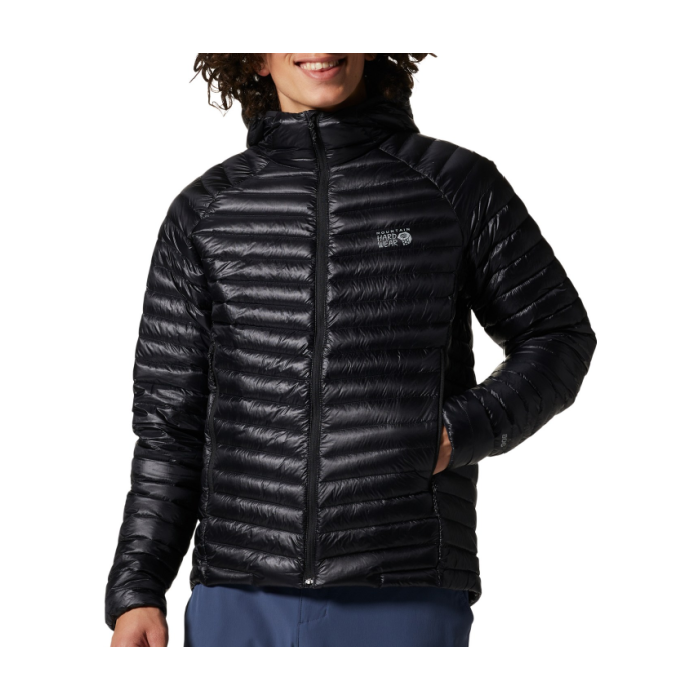
Mountain Hardwear Ghost Whisperer Hoody
Best Highly Compressible Ultralight Jacket
CleverHiker Rating: 4.7/5.0
Price: $380
Weight: 8.8 oz. / 6.9 oz.(men’s / women’s)
Fill Power: 800
Fill Weight: 2.5 oz. / –
Pros
- Ultralight
- Excellent warmth-to-weight ratio
- Highly compressible
- Packs into its own pocket
- Excellent wind resistance
- Layers easily
Cons
- Expensive
- No hood adjustment
- No chest pocket
- Less durable than other jackets
The Mountain Hardwear Ghost Whisperer (men’s /women’s) has been a favorite of thru-hikers and ultralight aficionados for years. This jacket provides everything you need—and nothing you don’t—to stay warm during fast and light adventures.
We’re huge fans. CleverHiker’s Managing Editor, Ben Applebaum-Bauch, hiked over 6,000 miles in the Ghost Whisperer, including thru-hikes of the CDT, PCT, and numerous shorter trails. He loves its packability and wind resistance, calling it one of his all-time favorite pieces of gear. It’s also a go-to for CleverHiker Founder Dave Collins, who’s logged several hundred miles in the jacket on trips through Yosemite, the Sawtooth Wilderness, and the PNW Cascades.
What we love most about this jacket is its exceptional balance of warmth and weight. At around eight ounces for most sizes, it’s warm enough for brisk mornings on high-altitude routes but still packs incredibly small into its own pocket—perfect for backpacking.
The Ghost Whisperer also features a sleek, athletic fit with basic yet functional features like high handwarmer pockets and hem adjustments. When paired with a lightweight fleece or a burly rain shell, it’s ideal for most cold and wet shoulder-season conditions. And, because this model is so lightweight, it dries quickly.
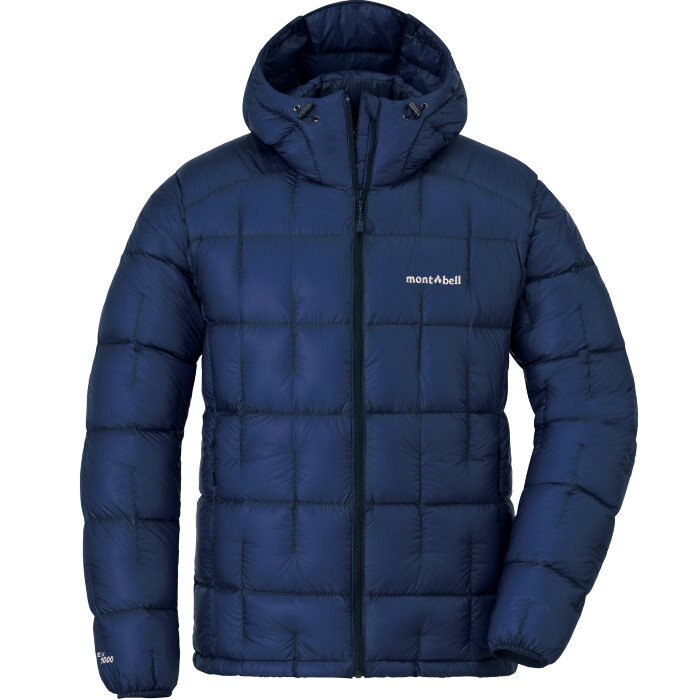
MontBell Plasma 1000 Alpine Down Parka
Best Warmth-to-Weight Ratio
CleverHiker Rating: 4.6/5.0
Price: $470
Weight: 8.4 oz. / 7.9 oz.(men’s / women’s)
Fill Power: 1000
Fill Weight: 3.4 oz. / 3 oz.
Pros
- Ultralight
- Outstanding warmth-to-weight ratio
- Highly compressible
- 1000-fill-power down
- Hem & hood adjustments
- Layers easily
Cons
- Very expensive
- Less durable than non-UL jackets
- No chest pocket
The MontBell Plasma 1000 (men’s /women’s) has one of the best warmth-to-weight ratios of any jacket we tested. If you’re an ultralight backpacker looking for the lowest weight for the most warmth, you can stop scrolling here.
At around eight ounces, the Plasma 1000 is perfect for long carries and compresses super small for big adventures. It’s an all-time favorite of CleverHiker Founder Dave Collins. He’s put over 500 miles on his Plasma 1000, including treks in Wyoming’s Wind River Range, Washington’s Olympic National Park, and Patagonia.
The Plasma is the only jacket on this list that uses 1000-fill power down. It stands in a class of its own for warmth and loft, making it a dream for backpacking. While it weighs about the same as some other ultralight jackets on our list, it certainly feels warmer. The Plasma is an ideal layer for sleeping on sub-freezing nights, making coffee in the morning, and staying warm just before bed.
This jacket doesn’t skimp on features. We appreciate the two-way hood adjustments, the two zippered hand pockets, and the ability to adjust the hem from within the pockets.
The biggest con of the Plasma 1000 is its extremely high price tag. However, if you’re a thru-hiker or backcountry traveler looking for truly top-of-the-line, ultralight warmth for 3-season trips, the Plasma 1000 is worth every penny for unrivaled comfort and huge weight savings.
You do sacrifice some durability with a jacket this light. The 7D nylon exterior is more prone to rips and tears compared to heavier options. However, this is a common issue with ultralight gear in general, not just the Plasma 1000. We always recommend carrying repair tape for patching in the backcountry.
The MontBell Plasma 1000 is a trailblazer in the world of ultralight gear and leads the pack for its low weight and exceptional warmth. This jacket is a must-have for those whose top priority is weight savings – without compromising on warmth and comfort.
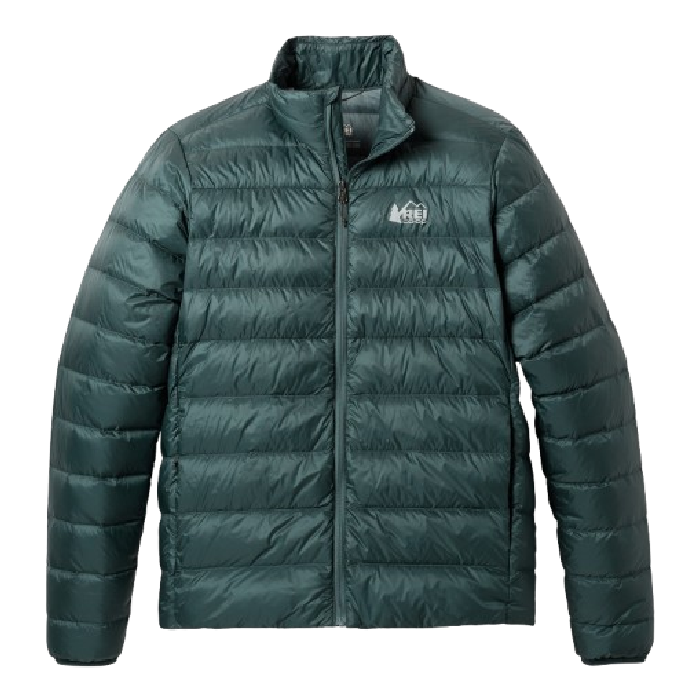
REI 650 Down Jacket
Best Budget Down Jacket Without a Hood
CleverHiker Rating: 4.4/5.0
Price: $129
Weight: 10.9 oz. / 10.2 oz.(men’s / women’s)
Fill Power: 650
Fill Weight: 3.5 oz. / –
Pros
- Excellent value
- Lightweight
- Highly compressible
- Packs into it own pocket
- Layers easily
- inclusive sizing
Cons
- Not as warm as some jackets
- Simple
- Less durable than some jackets
- No hood
- No chest pocket
The REI 650 Down Jacket (men’s / women’s) is one of the best bangs for your buck on the market. It’s a no-frills, lightweight, compressible option for almost any situation where you need a simple, warm extra layer.
The 650 Down has all the features we want, and nothing more: a cinch cord at the hem, two hand warmer pockets, two internal drop pockets, and a burly zipper. The nylon is comfortable against the skin, and at just over 10 ounces, it’s awesomely lightweight compared to other options on this list.
This jacket is one of the most bare bones options we tested, but that’s why it’s also one of the most versatile. The 650 Down doesn’t have a two-way zipper, chest pocket, or even a hood – but that’s precisely what we love about it. A down jacket like this is a key layering piece for daily wear.
The 650 Down is made with lower-fill-power down, so it’s not quite as heat-efficient as some of the more technical jackets on our list. That said, the 650 down isn’t meant to be a technical jacket, but a go-to option for day-to-day use. Our team rocks this jacket constantly as a lightweight, compressible layer. And, for the price, it performs extremely well.
Women’s Backpacking Tents
Although there’s nothing gender-specific about tents, they’re one of the most important components of any backpacking setup. When choosing a quality backpacking tent, we heavily factor in characteristics such as weight, cost, interior space, durability, and weather protection in our decision.
Below are some of our favorite backpacking tents, but our guide to the best backpacking tents has a lot more information and recommendations.
- Best All-Around Tent: Big Agnes Copper Spur HV UL2 & UL3
- Best Ultralight Tent: ZPacks Duplex & Triplex
- Best Budget Tents: REI Trail Hut 2 & REI Half Dome 2 Plus
- You might also like our guide to the best ultralight tents & our guide to the best backpacking tents
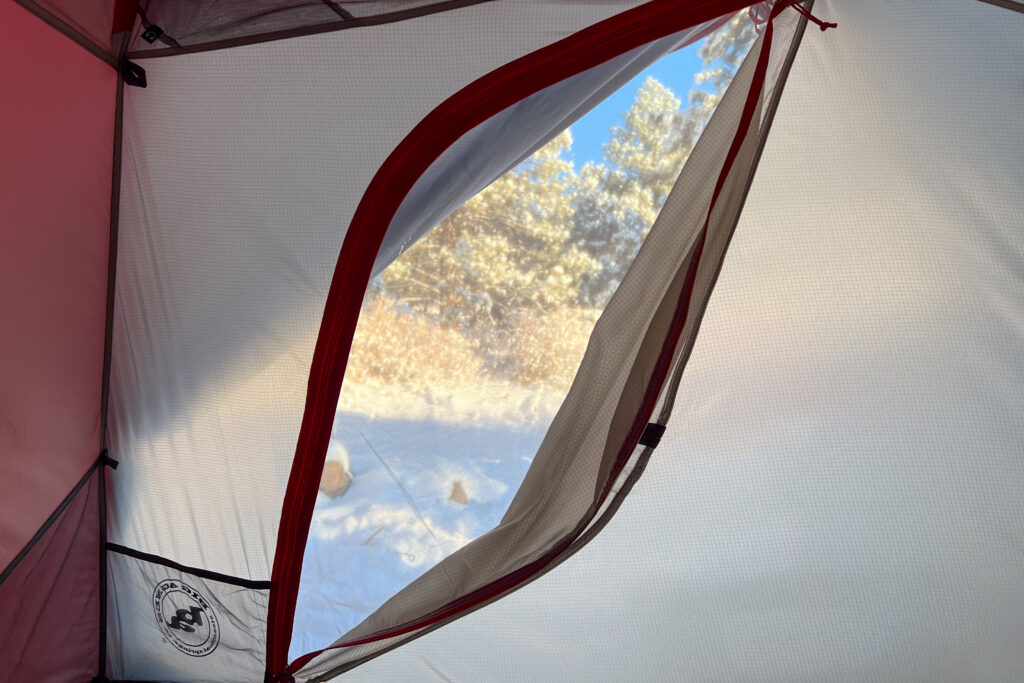
Women-Specific Hygiene
Women have specific hygiene needs when hiking in the backcountry. It’s best to have a plan in place before you head out to ensure you’re comfortable, clean, and prepared.
UNDERWEAR OPTIONS
In order to prevent bacterial infections, we recommend avoiding cotton underwear, which has a long dry time. Instead, hike in performance underwear such as ExOfficio Women’s Briefs, which are quick-drying, antimicrobial, and highly breathable. You can also try a wool pair like the Smartwool Intraknit Bikini if you’re looking for natural fibers.
We usually bring two pairs on backpacking trips, one for the trail and one for after we clean up in camp. When need be, you can always wash a pair in the backcountry because they dry quickly.
PERIOD CONSIDERATIONS
Another issue that many women grapple with while backpacking is dealing with their period. One option is to use tampons, preferably ones without an applicator. If packing out used tampons isn’t for you (because you love nature, and Leave No Trace is really important), there are other options.
Many women have transitioned to using a Menstrual Cup, which is an eco-friendly and convenient way to “catch” your flow. You can wear it for up to 12 hours, which should be sufficient for most days on the trail. Just remember hadn sanitizer and try it out before you need it.
URINATION CONSIDERATIONS
Staying well-hydrated is critical to any backpacking trip, and with this comes more frequent urination. Whether you squat behind a tree or use a female urination device such as Freshette or pStyle, you’ll want to ensure that you’re wiping properly and keeping a dry environment. Y
ou can use a small amount of toilet paper or a Kula Cloth attached to your pack (ultraviolet rays from the sun disinfect it). Always wipe front to back to prevent any infection. Getting a UTI on the trail is a surefire way to ruin a trip.
Women’s Backpacking Clothing
Your backpacking clothing choices will be highly personal, but there are several important considerations to keep in mind. Quick-drying clothing is key, and cotton products should be avoided whenever possible.
Also, take care to minimize excess clothing, because this is one of the most common ways people carry unnecessary weight on the trail. A layering clothing system is really important in the backcountry.
We generally recommend carrying only one of each clothing type and managing perspiration by adding or removing layers. For example, on chilly trips we can wear our short-sleeve shirt, long-sleeve shirt, fleece jacket, down jacket, and rain shell all at the same time for maximum warmth in camp. But when we start hiking, we’ll quickly want to remove layers to keep perspiration to a minimum. Below are some of our favorite, trail-tested options for women.
- FLEECE: Patagonia R1 Air
- RAIN PANTS: Mountain Hardwear Stretch Ozonic
- SHORTS: Nike Dri-FIT Tempo
- PANTS & LEGGINGS: The North Face Aphrodite 2.0
- HIKING TOPS: Nike Women’s Dri-FIT Tank and Outdoor Research Echo Hoodie
- UNDERWEAR: ExOfficio Women’s Briefs
- BRA: Patagonia Maipo Mid-Impact Bra
- SOCKS: Darn Tough Light Hiker Micro Crew & Balega Hidden Comfort
For more clothing recommendations, head to our Gear Guides Homepage.
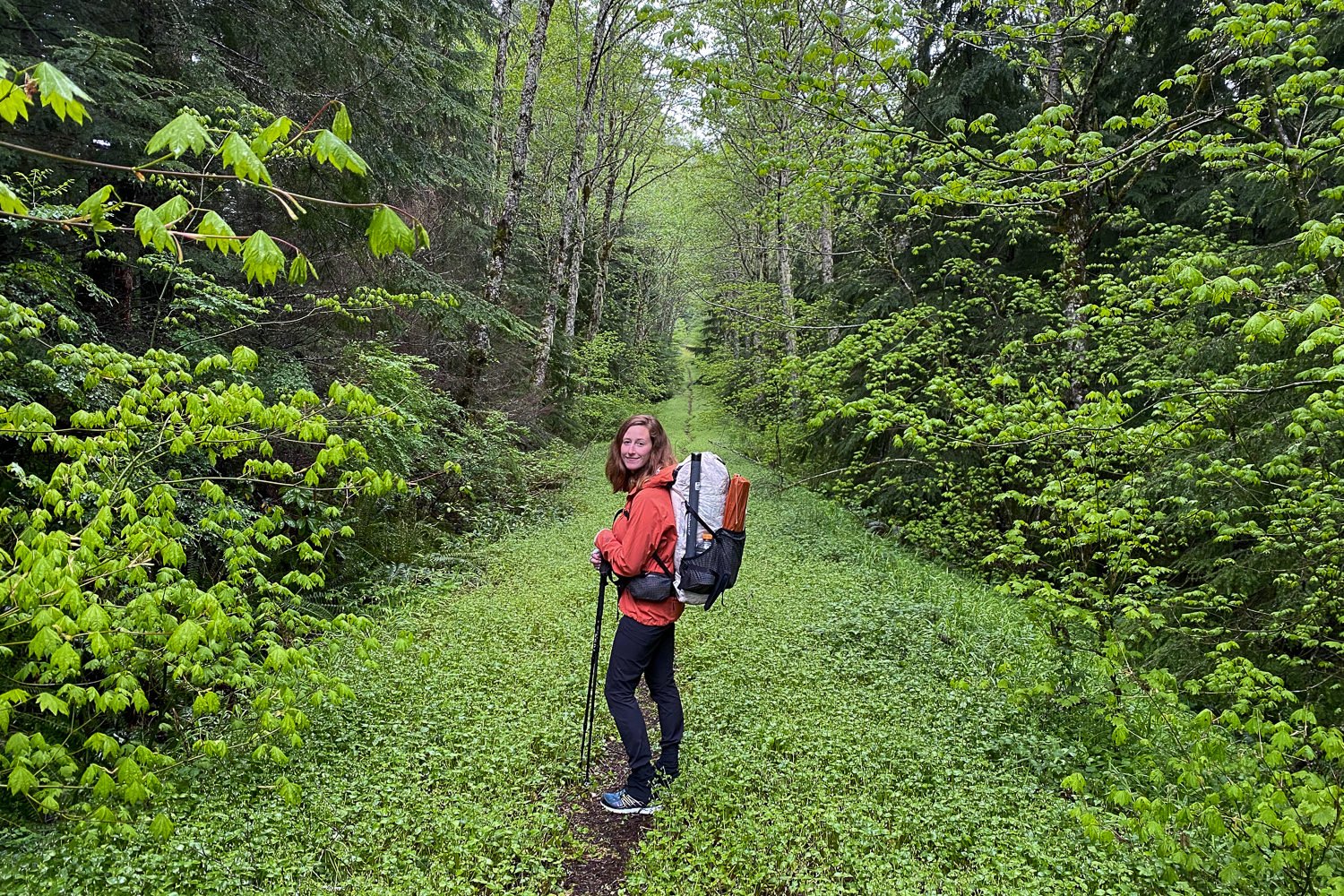
Other Women’s Accessories
The following accessories are not explicitly designed for women, but they make our Top Picks Gear List because they are some of our favorite trail tools. You’ll find these items in our packs on most trips.
- PILLOW: Zpacks Dry Bag Pillow
- HEADLAMP: Black Diamond Spot 400-R
- HAMMOCK: ENO TravelNest Hammock + Straps Combo
- STUFF SACKS: Hyperlite Mountain Gear Drawstring or Sea to Summit Ultra-Sil Dry
- GEAR REPAIR: Tenacious Tape
- COMPASS: Suunto M-3 D Leader
- TREKKING POLES: Gossamer Gear LT5
- SUNGLASSES: Ray Ban Polarized New Wayfarer
- MULTITOOL: Victorinox Swiss Army Classic SD
- FIRST AID KIT: AMK Ultralight/Watertight .7
- CAMP TOWEL: PackTowl Ultralite
- BUG REPELLENT: Permethrin & Picardin
- CATHOLE TROWEL: REI Snow Stake
- TENT STAKES: All One Tech Aluminum Stakes
- CAMERA: Sony RX100
- TRIPOD: PEDCO Ultrapod 3
- BOOK: Kindle Paperwhite
- PERIOD MAINTENANCE: Saalt Menstrual Cup
need more Gear advice?
If you liked this list, you’ll love the CleverHiker Gear Guide, where we test and recommend a wide range of outdoor adventure gear across various categories. Here are some links to popular articles:

